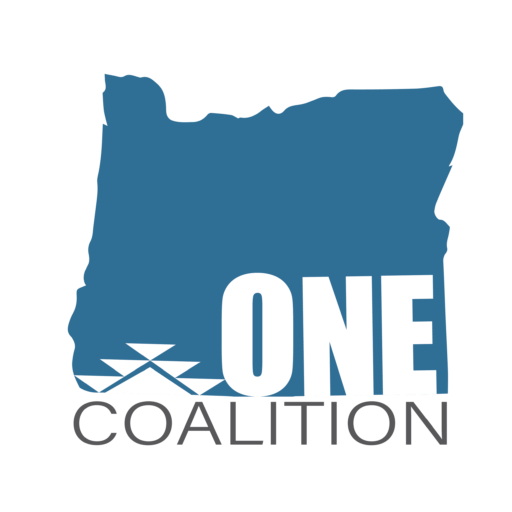Introduction
Duane Lane (00:00):
Hello. My name is Duane Lane. I’m the resource navigator here at the Oregon Native American Chamber in Portland, Oregon. And today I am, um, with Colin Gabriel, Micheil Wallace and Marina, Cassandra, uh, Colin, would you like to introduce yourself please?
Collin Gabriel (00:18):
Uh, yeah. Hi everyone. I’m a Multimedia Producer working with ONAC to develop content for our StartupOregon platform and, uh, really excited today to be talking about healthcare because I’m a small business as well. My wife and I own a small Montessori school, um, up in the, uh, sort of Beaverton Hillsboro area. And we have been thinking about acquiring, uh, healthcare for our business. So this is a really exciting topic for us.
Duane Lane (00:44):
Yeah. Thank you. Uh, Michael, would you like to introduce yourself please?
Micheil Wallace (00:48):
Sure. Thank you. Michael Wallace here with the Oregon Health Insurance Marketplace. I am the Employer Liaison with the marketplace. So I’m a first contact if you will, for small business owners and the like that may have questions around health insurance, whether it be group insurance or insurance for their individual employees.
Duane Lane (01:06):
Wonderful. Thank you for joining us and Marina please.
Marina Cassandra (01:10):
Sarah. My name is marina Cassandra. I’m the Constituent and Tribal Liaison for the Oregon Health Insurance marketplace. As Constituent Liaison, I respond to inquiries about, um, complex case issues that might be forwarded to us by elected officials and other state agencies that have might, might have received inquiries as a Tribal Liaison. I do the, um, I represent the agency and government to government work and provide technical consultation for, um, cost protections to American Indians, Alaska Natives, and the Affordable Care Act.
Duane Lane (01:49):
All right, thank you everyone for the introductions. And today we’re going to be talking about, um, health coverage for, uh, small business owners, business owners, entrepreneurs that are in need of, uh, healthcare for themselves or their employees. So, um, Michael and Marina, if you want to start with the shot, uh, slides please.
Marina Cassandra (02:13):
So as mentioned, we’re talking about health coverage for employers and entrepreneurs and self employed and we will be discussing group coverage and individual coverage today. There are options for employers and employees such as employer sponsored group coverage, small business health options program, or SHOP individual coverage, health reimbursement arrangements, and associations health plans. We’ll be covering all of these in a little bit more detail throughout the presentation. Starting with key vocabulary to understand how plants may differ. We all know that, um, most coverages require a premium, a monthly premium that we pay for the opportunity to share our medical costs with the insurance company, just like car insurance. You can pay a monthly premium and never have to use it, but if you do, sometimes there are things like deductibles involved. And so in healthcare, that is definitely the case. In most plans, there are deductibles and out-of-pocket maximums co-insurance and copayments.
Marina Cassandra (03:20):
All of these are considered cost sharing. So again, after the premium is paid, then we might be sharing some costs with the insurance company and here’s how they all kind of work out.
Marina Cassandra (03:34):
So with co-insurance a deductible must be met before the insurance company will pay a percentage of the service.
Marina Cassandra (03:42):
A copayment does not require a deductible to be met, and there’s a flat amount that is paid per occurrence. So each visit to a specialty care or to a primary care, for example, might just be a co-payment. You did not have to satisfy the deductible. You can just make your co-payment instead of paying the full price of the service for services that require co-insurance, which is actually a percentage of the service. The deductible must be met before the insurance will pay their part. So the consumer will pay full costs until the deductible is met.
Marina Cassandra (04:18):
And then for that particular service, and then the insurance part, the insurance company will pay their percentage. A really common co-insurance is 80 20, where the consumer pays 20% and the insurance company pays 80% of that service. All of the money that you put into your health care costs for covered services are going to go towards your out of pocket maximum. Now a deductible and out-of-pocket maximums are annual amounts that will start again at the first of the plan year.
Marina Cassandra (04:52):
So if I am paying into my deductible and making my copays, and I reach my full, um, out of pocket maximum before the end of the plan year, guess what the insurance company is going to pick up the rest of the cost for all covered services
Duane Lane (05:09):
And, uh, marina on the plan year. Is that typically a calendar year? Is it start in January or does it vary?
Marina Cassandra (05:18):
That’s correct. Let’s play on your start at the beginning of the year. However, if you had a special enrollment or were new to a company and you started that in the middle of the year, it would just run to the rest of the calendar year and renew on the first of the year. Most plan year are calendar years. That’s a great question.Thanks Duane, So for options for employers, I’m going to hand it over to Micheil.
